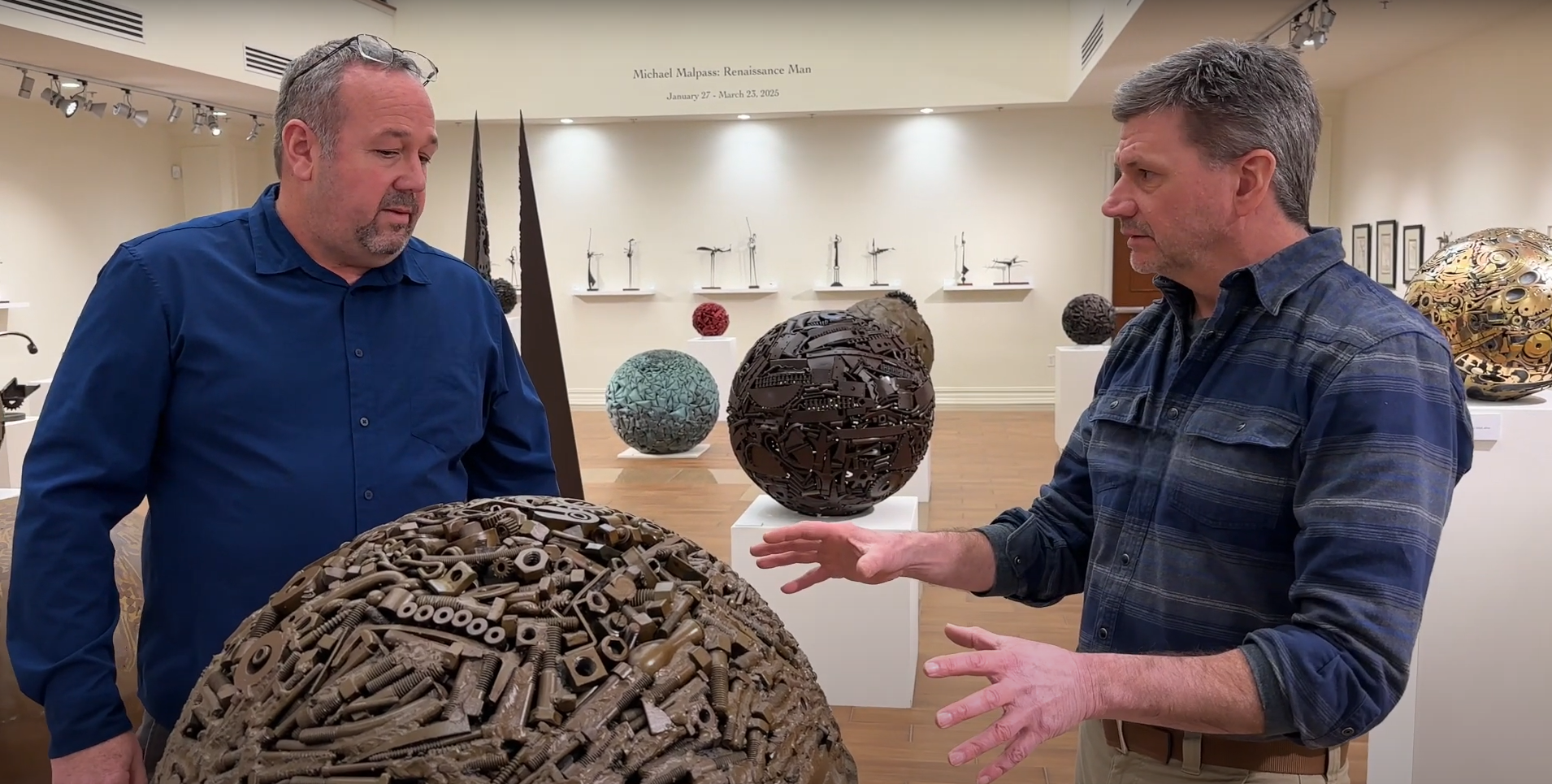Through the artistry of welding and traditional blacksmithing, Michael Malpass transformed discarded industrial materials into breathtaking sculptures. His mastery of steel, bronze, copper, and brass allowed him to give new life to remnants of the past, elevating them from their utilitarian purposes to works of fine art.

This video showcases the Michael Malpass exhibition at the Dimattio Gallery in Resnick Hall, Monmouth University, featuring the intricate metal sculptures of the late artist. Hosted by Jon Peters, the video explores Malpass’s artistic process, as explained by his son, Michael Malpass Jr. The discussion delves into the craftsmanship behind his signature spherical sculptures, forged from salvaged metal, and highlights the artist’s relentless dedication to his work.
A Celebration of His Work
The recent exhibition at the Dimattio Gallery in Resnick Hall, Monmouth University, celebrated Malpass’s legacy, drawing in art enthusiasts and admirers alike. The exhibition featured an intimate conversation with Malpass’s son, who provided insight into his father’s creative process and artistic journey.
Malpass’s technique was as intricate as his sculptures. He started with a sea buoy, cutting it in half to form a mold for his metalwork. Using an anvil and band saw, he shaped and forged metal pieces into perfect spheres. The true marvel of his craftsmanship lay in his ability to seamlessly weld the hemispheres together, creating an illusion of a flawless whole. Each sculpture, a puzzle of metals, concealed its seams with an almost magical precision.
The exhibition featured a range of his works, from solid steel spheres to multi-metal compositions incorporating bronze, brass, copper, and nickel. One standout piece belonged to Malpass’s wife, Kathleen O’Donnell, and was cherished as part of the family’s private collection. Another appropriately titled Tool Ball was composed entirely of tools—wrenches, chains, and railroad spikes—assembled into a stunning spherical form.
His son reminisced about a particularly striking piece called Pyramid, a sculpture with a perfectly mirrored design on each side. Weighing around 400 pounds, this artwork nearly caused an accident while being moved, highlighting the physicality required to both create and handle these sculptures.
The Universal Appeal of Malpass’s Work
A defining trait of Malpass’s work was its ability to captivate people from all walks of life. His son recalled how plumbers and electricians, upon seeing his father’s sculptures, immediately recognized and appreciated the repurposed industrial components within them. To them, Malpass’s art was more than aesthetics—it was a remarkable reinvention of the materials they used daily.
One of his outdoor sculptures, aged beautifully with a green patina like the Statue of Liberty, was set to join the permanent collection at Grounds For Sculpture in Hamilton, New Jersey. This placement ensured that Malpass’s legacy would continue inspiring future generations.
A Life Dedicated to Creation
Malpass’s career was flourishing at the time of his passing in 1991 at the young age of 44. He had multiple commissions underway for companies like Pfizer, General Electric, and ExxonMobil. His work ethic was legendary—rising early, working tirelessly in his studio, and creating art until nightfall. His hands bore the marks of his dedication, reflecting the sheer physicality of his craft.
Photographs from his time at Pratt Institute, where he both studied and taught sculpture, further illustrated his commitment to his art. His wife’s photography captured moments of his creative process, preserving his legacy in both image and form.


The Michael Malpass exhibition was a powerful tribute to a man whose artistry transcended time. His sculptures, crafted from forgotten fragments of metal, continue to tell stories of transformation and boundless creativity. Though his time was brief, his impact on the world of sculpture remains immeasurable.


Leave a Reply